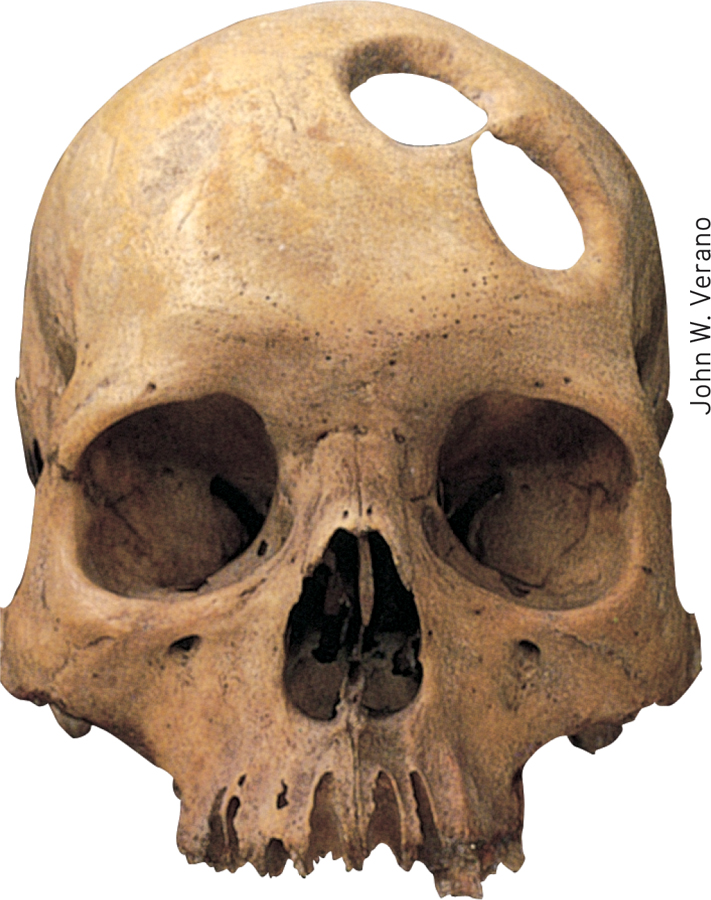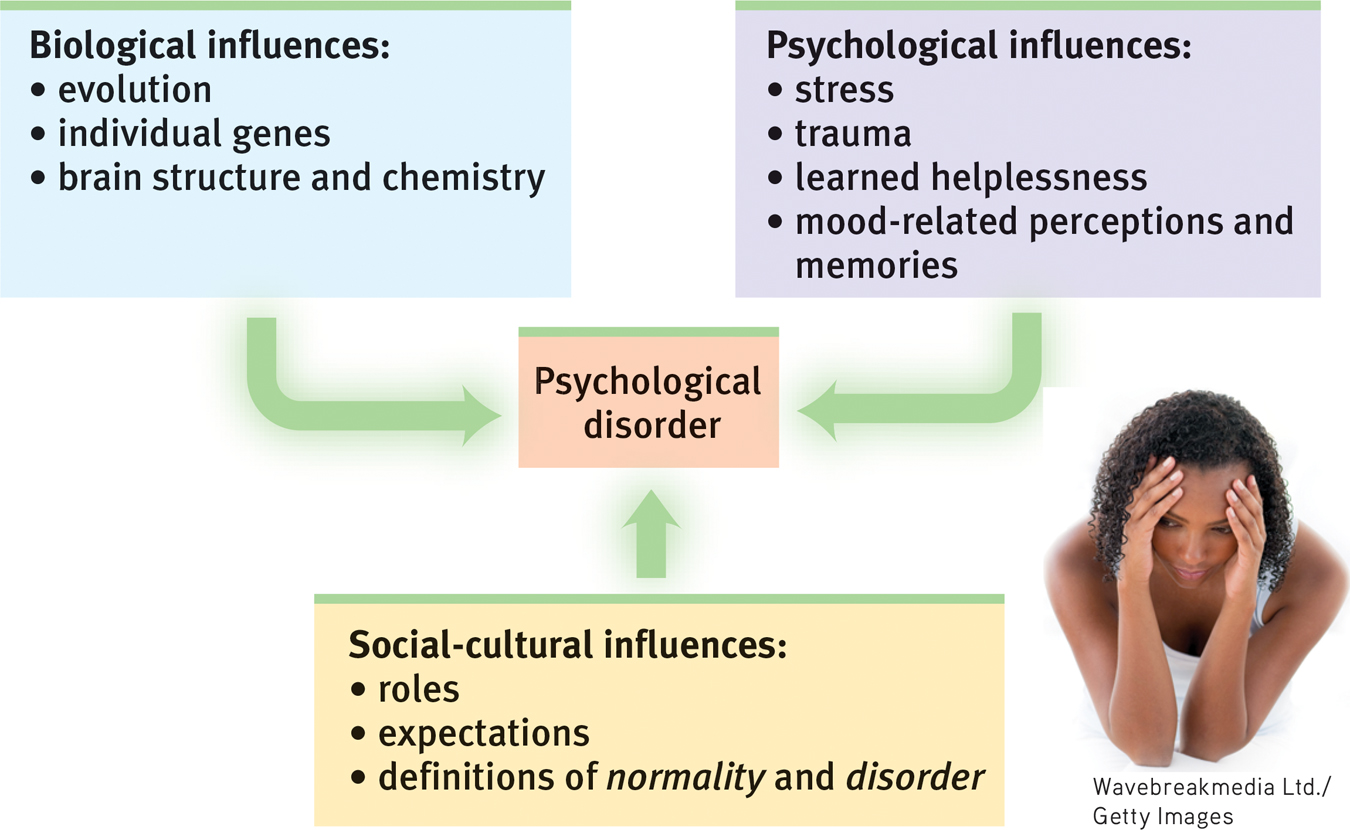49.2 Understanding Psychological Disorders
49-
The way we view a problem influences how we try to solve it. In earlier times, people often viewed strange behaviors as evidence that strange forces—

The Medical Model
Brutal treatments may worsen, rather than improve, mental health. Reformers, such as Philippe Pinel (1745–

612
By the 1800s, the discovery that syphilis infects the brain and distorts the mind drove further gradual reform. Hospitals replaced asylums, and the medical model of mental disorders was born. This model is reflected in the terms we still use today. We speak of the mental health movement: A mental illness (also called a psychopathology) needs to be diagnosed on the basis of its symptoms. It needs to be treated through therapy, which may include time in a psychiatric hospital.
The medical perspective has gained credibility from recent discoveries that genetically influenced abnormalities in brain structure and biochemistry contribute to many disorders. But as we will see, psychological factors, such as chronic or traumatic stress, also play an important role.
The Biopsychosocial Approach
To call psychological disorders “sicknesses” tilts research heavily toward the influence of biology and away from the influence of our personal histories and social and cultural surroundings. But in the study of disorders, as in so many other areas, we must remember that our behaviors, our thoughts, and our feelings are formed by the interaction of biological, psychological, and social-
Some disorders, such as depression and schizophrenia, occur worldwide. From Asia to Africa and across the Americas, schizophrenia’s symptoms often include irrationality and incoherent speech. Other disorders tend to be associated with specific cultures. In Malaysia, amok describes a sudden outburst of violent behavior (thus the English phrase “run amok”). Latin America lays claim to susto, a condition marked by severe anxiety, restlessness, and a fear of black magic. In Japanese culture, people may experience taijin kyofusho—social anxiety about their appearance, combined with a readiness to blush and a fear of eye contact. The eating disorders anorexia nervosa and bulimia nervosa occur mostly in food-
Increasingly, North America’s disorders, along with McDonald’s and MTV, have spread across the globe (Watters, 2010).
Disorders reflect genetic predispositions and physiological states, inner psychological dynamics, and social and cultural circumstances. The biopsychosocial approach emphasizes that mind and body are inseparable (FIGURE 49.1). Negative emotions contribute to physical illness, and physical abnormalities contribute to negative emotions. Epigenetics, the study of how nurture shapes nature, also informs our understanding of disorders (Powledge, 2011). Genes and environment are not the whole story, as we’ve seen in other modules. It turns out our environment can affect whether a gene is expressed or not, and thus affect the development of various psychological disorders. For example, even identical twins (with identical genes) do not share the same risks of developing psychological disorders. They are more likely, but not always destined, to develop the same disorders. Their varying environmental factors influence whether certain culprit genes are expressed.

 Figure 49.1
Figure 49.1The biopsychosocial approach to psychological disorders Today’s psychology studies how biological, psychological, and social-
613
RETRIEVAL PRACTICE
- Are psychological disorders universal, or are they culture-specific? Explain with examples.
Some psychological disorders are culture-
- What is the biopsychosocial approach, and why is it important in our understanding of psychological disorders?
Biological, psychological, and social-